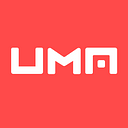The EOY and UMA’s Multi-DAO Future
Tl;dr — 2021 has been a year of decentralization for the organizations supporting the UMA protocol. The protocol now has two DAOs supporting it: The UMA token holders DAO and the evangelist SuperUMAn DAO.
It also has a third organization, which is Not a DAO — the Risk Labs foundation, that operates within a mandate to support the UMA ecosystem. RL has diversified its holdings and has over $50M in non-$UMA token assets to provide years of development runway.
The Future is Multi-DAO
There is a tension between decentralization and the ability to move quickly. This is why DeFi blue chips with mammoth treasuries have relatively tiny grant programs. We believe that having several, interrelated but distinct organizations may solve this problem, and we are testing this thesis.
Vitalik describes this tension in his recent essay: The bulldozer vs vetocracy political axis.
He paints two ends of a spectrum:
Bulldozer: single actors can do important and meaningful, but potentially risky and disruptive, things without asking for permission
Vetocracy: doing anything potentially disruptive and controversial requires getting a sign-off from a large number of different and diverse actors, any of whom could stop it
We believe that having multiple, interrelated DAO’s placed on different parts of this spectrum may help address this tension
The SuperUMAn DAO
The SuperUMAns began as an earned role in the UMA Discord in Q1 of 2021. As the year progressed, Risk Labs gave a series of KPI Option tokens to the community, aiming to help increase protocol adoption and community cohesion.
As the community got stronger, it became apparent that organizing and incentivizing them in a centralized way would be difficult to scale. They also became restless like teenagers ready to move out!
As a result, Risk Labs offered the SuperUMAns $1,000,000 worth of $UMA tokens to seed a DAO. In Q4 of 2021, the SuperUMAn community has met three times a week to discuss 7 distinct DAO topic areas:
Mission, Goals, and Values
DAO Structure
Treasury Management
Revenue Management
Membership
Governance
DAO Tooling
This process is now complete and the SuperUMAns are now a fully autonomous DAO. That $1M is in a multisig with a SuperUMAn majority, ready to be transferred to the SuperUMAns just as soon as they have launched their NFT governance token system.
The SuperUMAns are now able to operate independently, and are expected to request funds from the UMA DAO. Instead of the individual members of the UMA team deciding incentive programs, SuperUMAns will post proposals and request funding from UMA tokenholders. Risk Labs is no longer involved.
The Super Umans can move quickly on small grants + promotional programs. This allows them to operate independently of the team and the wider $UMA tokenholders.
They do not have a token-value governance system, which is critical. Instead, they use a reputational system, where veterans have more voting power.
Since there will be no whales to convince, but rather a democratic model, our thesis is that they will be able to move more quickly. Their incentives are aligned in the long term, as they will request additional funds from the UMA DAO.
The UMA DAO
Risk Labs has surrendered 35M UMA tokens to the control of $UMA voters; this represents 35% of the original mint. In addition to voting on requests to the optimistic oracle, UMA tokenholders will now vote on strategic funding decisions.
Previously, these tokens were held by the foundation for ecosystem growth. They have been handed over to UMA tokenholders. Over the coming year there will be more structure put in place to allow for fund allocation voting vs. voting to secure the oracle.
Risk Labs: Not a DAO — a foundation with over $50M of runway capital
As if to demonstrate knowledge of treasury management for the sake of encouraging uptake of UMA’s products, Risk Labs has grown the non-$UMA treasury from less than $10M to over $50M in a sustainable and risk managed way. At no time in the last 18 months has the team’s burn rate exceeded its treasury’s growth. The team now sits at over 25 members, including a PhD, ex-Goldman Sachs, Google, IBM, and EY veterans.
This foundation has a mandate to increase the adoption of the UMA protocol.
The foundation will retain a relatively small number of $UMA tokens in order to rapidly test incentive programs, but would need to bring them to a vote to fund those experiments for the long term.
Vetocacy vs. Bulldozers
It is our intention that the interplay between these three organizations will result in at least a more-optimal position when it comes to the tradeoffs between a vetocracy and a bulldozer.
The RL foundation is a group of core contributors who have the most context and can make decisions without anything other than internal, soft consensus. The SuperUMAn DAO can move quickly, with representational rather than token-weighted voting. And the UMA DAO is charged with both securing UMA’s optimistic oracle and approving major funding requests from RL and the SU DAO.
These three organizations are well funded and positioned to launch UMA’s optimistic oracle to its next level of adoption in Web3.

